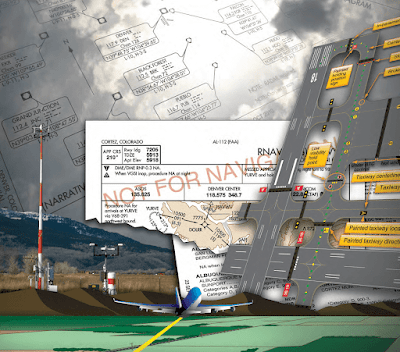Thousands of instrument flight rules (IFR) takeoffs and departures occur daily in the National Airspace System (NAS). In order to accommodate this volume of IFR traffic, air traffic control (ATC) must rely on pilots to use charted airport sketches and diagrams, as well as departure procedures (DPs) that include both standard instrument departures (SIDs) and obstacle departure procedures (ODPs). While many charted (and uncharted) departures are based on radar vectors, the bulk of IFR departures in the NAS require pilots to navigate out of the terminal environment to the en route phase.
IFR takeoffs and departures are fast-paced phases of flight, and pilots often are overloaded with critical flight information. While preparing for takeoff, pilots are busy requesting and receiving clearances, preparing their aircraft for departure, and taxiing to the active runway. During IFR conditions, they are doing this with minimal visibility, and they may be without constant radio communication if flying out of a non-towered airport. Historically, takeoff minimums for commercial operations have been successively reduced through a combination of improved signage, runway markings and lighting aids, and concentrated pilot training and qualifications. Today at major terminals, some commercial operators with appropriate equipment, pilot qualifications, and approved Operations Specifications (OpSpecs) may takeoff with visibility as low as 300 feet runway visual range (RVR). One of the consequences of takeoffs with reduced visibility is that pilots are challenged in maintaining situational awareness during taxi operations.

